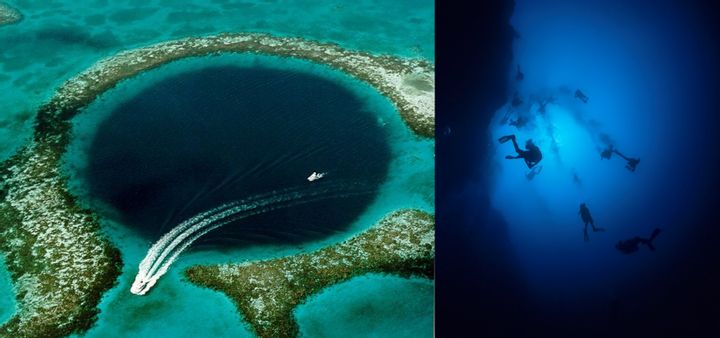Lunar Rover’s Rare Discovery Leaves Scientists Baffled
From above the Blue Hole of Belize is breathtaking. It's a huge almost perfectly round formation in the middle of the reef. Its deep azure color contrasts with the surrounding turquoise Caribbean waters.
But its deep color hides a deep secret. The hole plunges down almost 420 feet below the surface and has remained unexplored and untouched at those depths… until now.
A team of explorers have set out to discover what lurks at the bottom of the tantalizing ocean formation.
But what they would discover when they finally reach the ocean floor would leave them surprised horrified… and deeply troubled.
1 The Cousteau Family
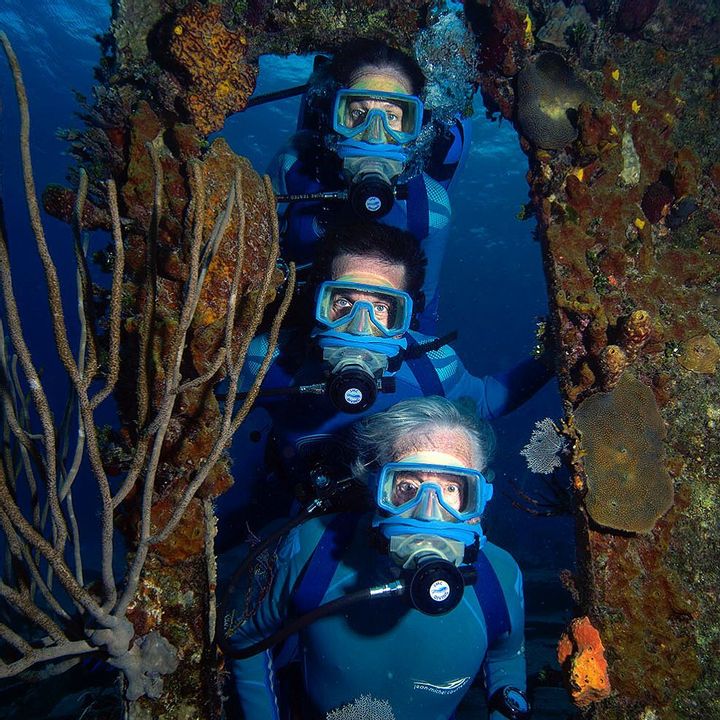
Diving into the depts of the ocean is not a task for any diver. It's very risky meaning that only someone with certain experience is suitable for the task and no one has more experience than the Cousteau family.
The Cousteau family has a long history with the sea.
Fabien Cousteau's grandfather Jacques Cousteau was a diving pioneer and helped design the SCUBA gear still used by divers today. Fabien on his part has dedicated his life to exploring the deep ocean. He's searched for and discovered ancient shipwrecks documented sharks and plunged into the dark murky waters of the deep sea on countless occasions.
But his dive in Belize's Blue Hole left him utterly speechless…
2 The Belize Barrier Reef
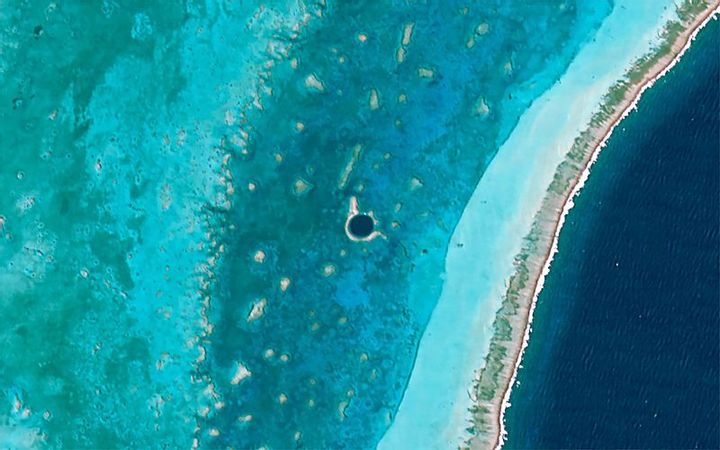
The Belize Barrier Reef just east of Belize's coast is a big part of the ecosystem known at the Mesoamerican Barrier Reef.
Starting in Mexico's Yucatán Peninsula in the north and ending south of Honduras it is the second largest reef network in the world following Australia's famous Great Barrier Reef.
The Blue Hole is situated in the reef's center a dark spot beckoning explorers to it with its mystifying unexplored depths.
3 Under the Water
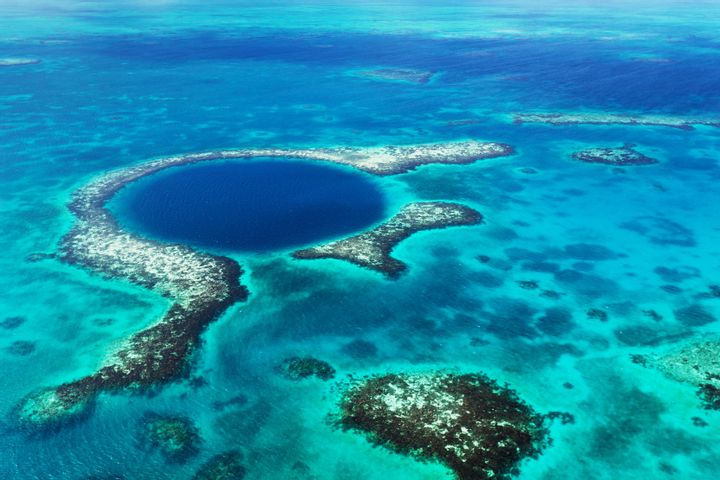
The Blue Hole is located in the easternmost part of the Belize Barrier Reef in a smaller formation known as Lighthouse Reef.
An irresistible draw for SCUBA divers the Blue Hole is truly a marvel of the natural world.
With a radius large enough to comfortably fit two Boeing 747 planes side by side in its gaping maw the Hole is enormous - but still makes for some pretty tricky diving requiring divers to have at least 24 previous dives under their belt before attempting to explore its depths.
But while the parts closer to the surface are quite a popular diving destination its depths have remained unexplored and may yet hold unimaginable secrets.
4 Legacy
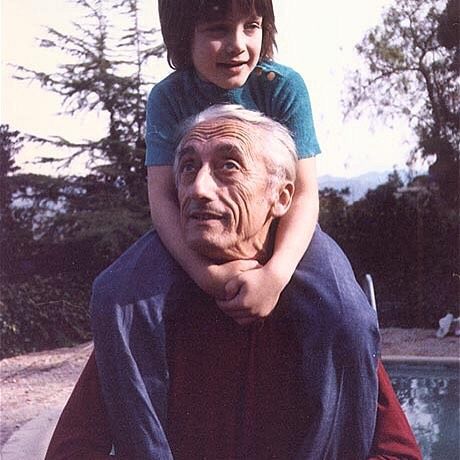
Fabien Cousteau had more than just a professional interest in this mission.
His grandfather Jacques Cousteau had visited the Blue Hole back in 1971 - and declared it one of the top five diving spots on the planet.
But back in the '70s the diving equipment available to the world-famous ocean explorer wasn't nearly as sophisticated at the equipment available to his grandson - and while the older Cousteau only got a peek at the hidden depths of the Hole it seemed his grandson would be in a position to expand on his work.
5 Virgin Oceanic
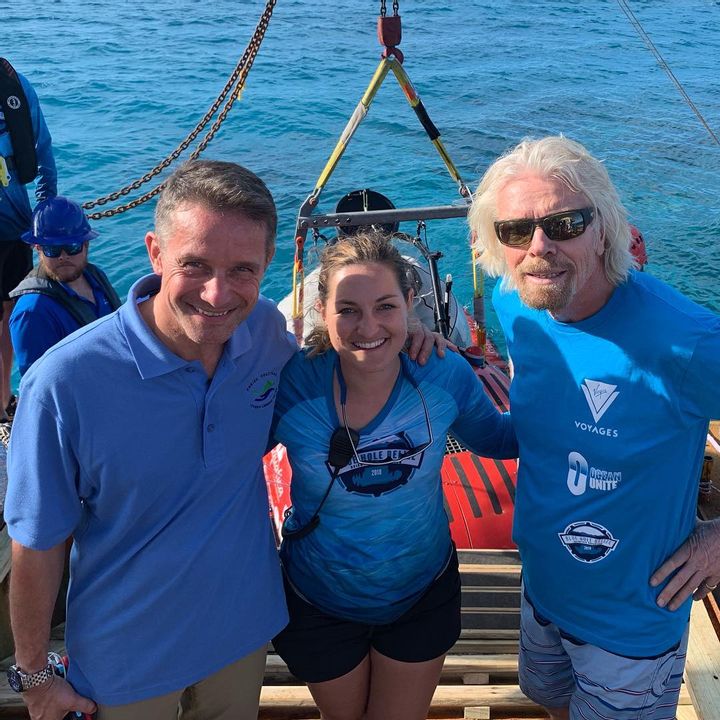
Fabien Cousteau wasn't the only big name in ocean exploration to join the Blue Hole expedition.
Joining him was none other than the legendary billionaire conservationist and adventurer Sir Richard Branson.
Branson through his ownership of the Virgin Group is also an owner of the company Virgin Oceanic which owns a fleet of submersible vehicles. Passionate about ocean exploration and conservation Branson was keen on joining Cousteau in the Caribbean.
Descending to the bottom of the Hole along with the two explorers was oceanographer Erika Bergman who would also pilot their submarine Aquatica.
But while they were all excited about being the first humans to ever visit the bottom of the pit their cheery faces would sport far grimmer expressions upon their return.
6 Man on a Mission
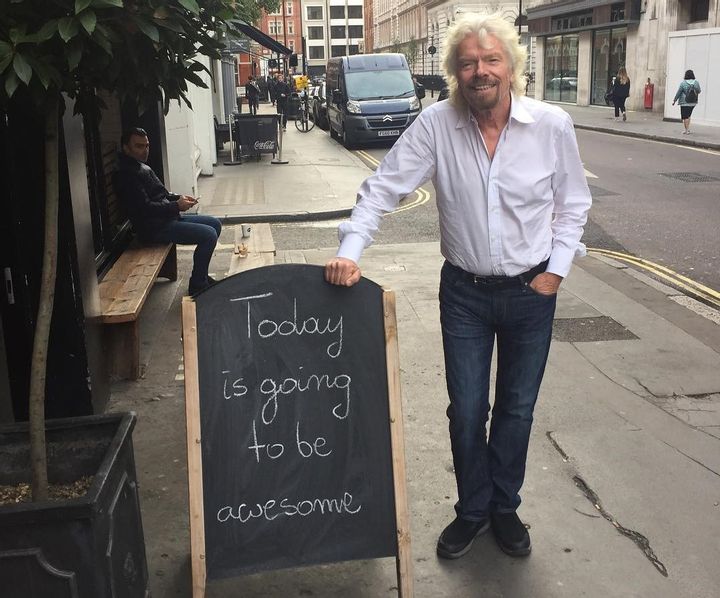
Sir Richard Branson had been very fortunate in his business ventures and today he is interested in giving back to society. One of the subjects he is most passionate about is raising awareness of climate change and finding ways to combat it by promoting and educating about ecological sustainability.
Following Jacques Cousteau doctrine of "people protect what they love" he finds great value in making the oceans more accessible to people - and had even hosted a summit on global warming at his private residence on the British Virgin Islands.
7 Planetary Inner Space
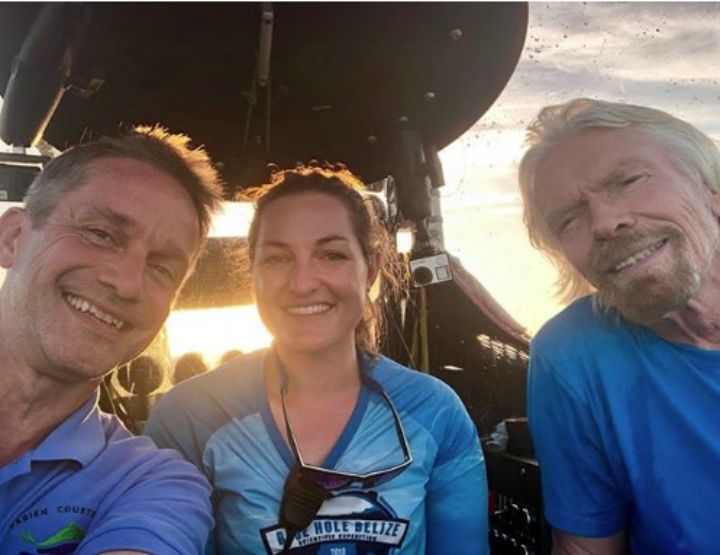
While the Blue Hole of Belize is far from being the deepest sinkhole in the ocean its unique shape and geological composition have made the mission to penetrate its depths unique in the history of deep-sea exploration.
Sir Richard Branson called it a mission into "planetary inner space" and media coverage of the event was unprecedented.
Branson Cousteau and Bergman's descent would be live streamed as they delved deeper underwater with the Discovery Channel broadcasting their camera feeds all over the world in real time.
Finally preparations were over the checklists checked off and the cameras were rolling. The intrepid trio were ready to make history.
8 The Aquatica
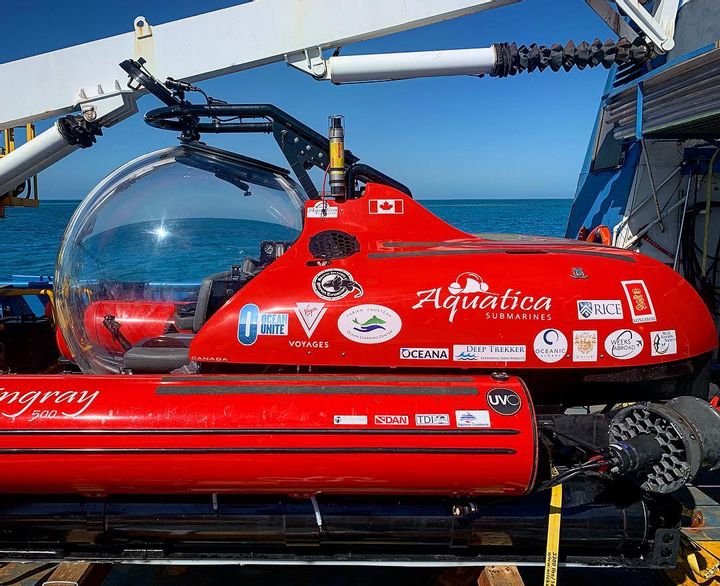
The last time there was so much excitement and public interest around a deep-sea mission was when acclaimed Hollywood director and ocean explorer James Cameron had descended to the bottom of the Mariana Trench - the deepest known point in the world's oceans.
Because the depth Cousteau Branson and Bergman would be descending into far shallower waters they could afford a much larger viewing dome. The Aquatica submarine boasted excelled views all around its passengers.
Soon the sub was broadcasting images many SCUBA divers who had dived in the Blue Hole had seen - the blue waters swirled around a sheer cliff face and the mission was underway.
9 Stalactites
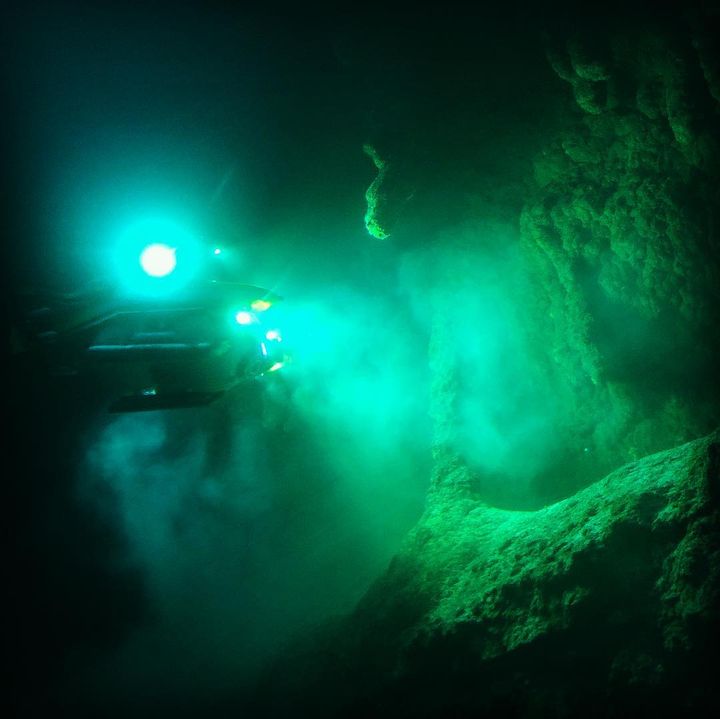
At first the submarine kicked up some sediment harming the crew's visibility - but soon the floating underwater sediment gave way to a fascinating geological formation: caves upon caves of hanging stalactites.
While stalactites are common in caves on dry ground it is impossible for them to form underwater - so how could there be stalactites more than 20 meters under the water?
10 Silent Testimony
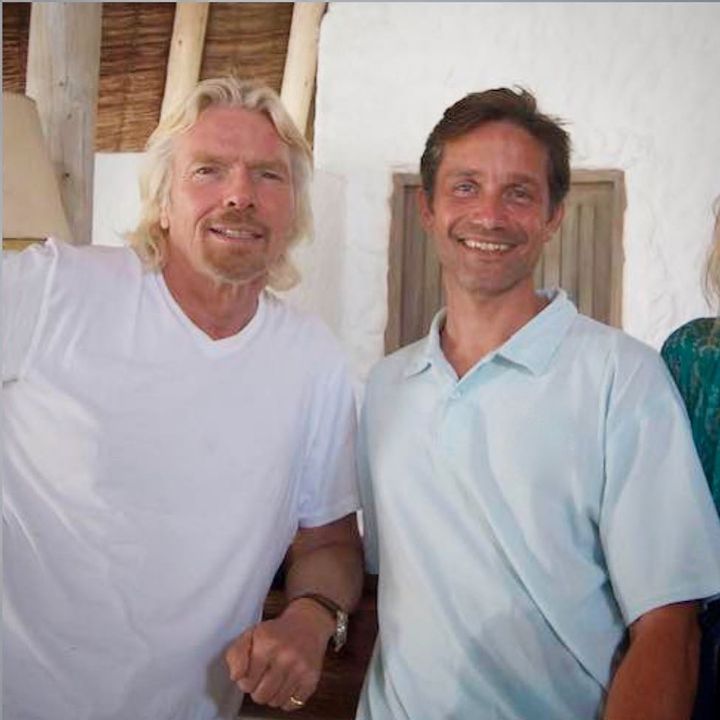
For the crew seeing cave stalactites underwater could only mean one thing. This was in the words of Sir Richard Branson “One of the starkest reminders of the danger of climate change” they had ever seen.
At the end of the last major Ice Age sea levels in the Caribbean had risen at a rapid pace submerging vast stretches of once-dry land. At 200 feet underwater the coloring of the rock formations changed denoting the previous levels of sea water before the oceans rose and drowned the cave systems above.
11 Samples

Years before Branson Bergman and Cousteau had taken the Aquatica into the Blue Hole a team of researchers from Rice University and Louisiana State University had descended into it in order to collect samples from its sheer walls at different depths.
They hoped that the samples they took would help them solve a historical mystery that took place miles and miles away deep in the jungles of Central America.
12 The Passing of a Civilization
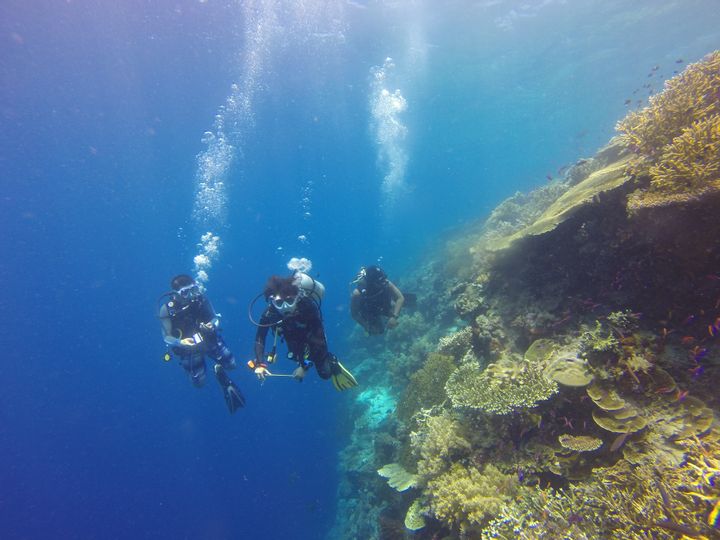
Belize as well as the rest of Central America had once been home to a sprawling advanced civilization - the Maya Kingdom.
One of history's greatest mysteries was the apparent mass abandonment of Mayan cities and the subsequent collapse of the ancient culture.
Could the Blue Hole hold the answers to the age-old question of the Mayan Civilization?
The scientists from the previous expedition to the Hole had found abnormally low levels of titanium and aluminum in its walls - elements which are usually worn out of rock and into the ocean waters by tropical storms. This could mean that the Maya's decline may have been linked to a terrible long lasting drought.
But the Hole had more secrets to reveal yet.
13 A Toxic Layer
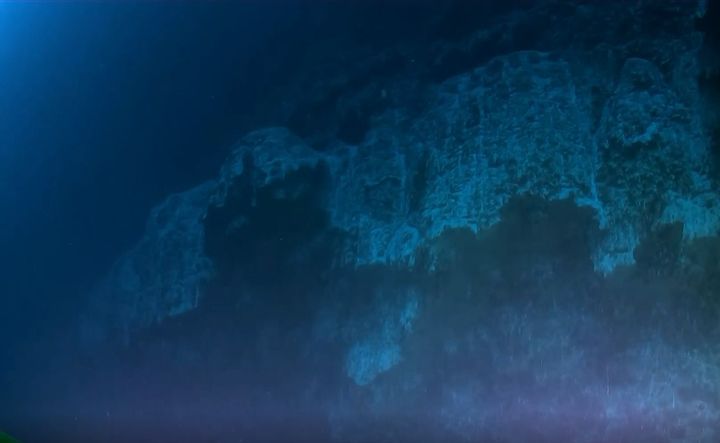
As the team continued to descend they began to notice a floating barrier beneath them. It was a deadly layer of water rich with hydrogen sulfide 20 feet thick floating nearly 30 meters below the surface.
Hydrogen sulfide is an extremely toxic substance which can corrode metal - and easily suffocate and kill any form of marine life that happens to wander into it. In the surrounding caves the team found countless crabs conches and other invertebrates that had become stuck in the noxious waters and died.
Usually this unpleasant layer of water marks the very limit to which Blue Hole divers can travel - but the Aquatica was equipped to handle the harmful environment and continued its descent.
What they would find beneath the layer of sulfide would prove to be far scarier than poisonous waters and crab carcasses.
14 Hitting Bottom
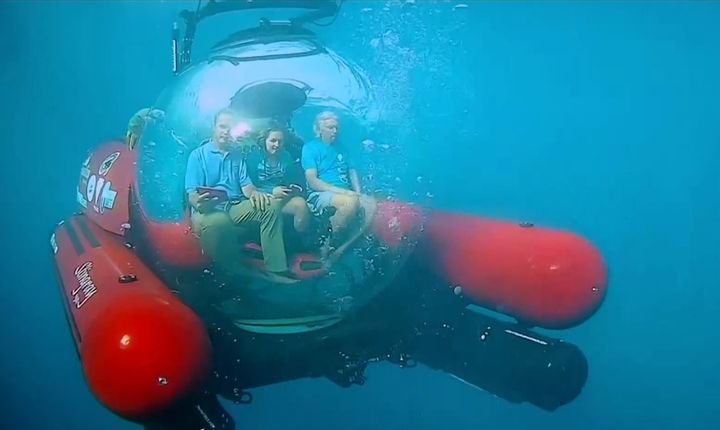
After battling through the thick layer of hydrogen sulfide the team managed to reach the bottom of the pit - a feat never before accomplished by a manned vessel.
Fabien was especially excited: he would be able to pick up his grandfather's work where he had left off and expand our knowledge of the oceans.
The team planned to map the geological anomaly's lowest reaches and hopefully bring back some scientifically important findings.
But what they ended up finding beneath the heavy blanket of hydrogen sulfide would leave them terrified.
15 Submerged Wasteland
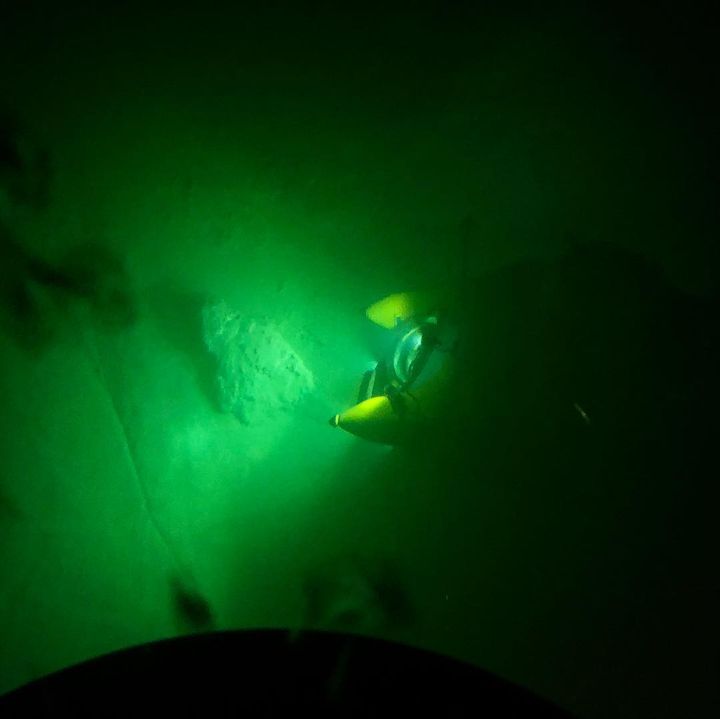
As Cousteau and his team mapped out the bottom of Belize's Blue Hole their feeling of dread and worry grew from minute to minute.
From the surface the Blue Hole seemed like a pristine untouched natural wonder removed from any human influence. But as the submersible crawled across the bottom of the pit a very different reality was revealed.
Countless empty plastic bottles bags and garbage lined the Hole's floor. The Hole like many other parts of the ocean was found to be an underwater landfill. The team were horrified saddened and revolted. How could we have let this natural wonder turn into a garbage dump?
As Cousteau and Bergman voiced their concern it became clear to Sir Richard Branson that something had to be done.
16 Horrors of the Deep
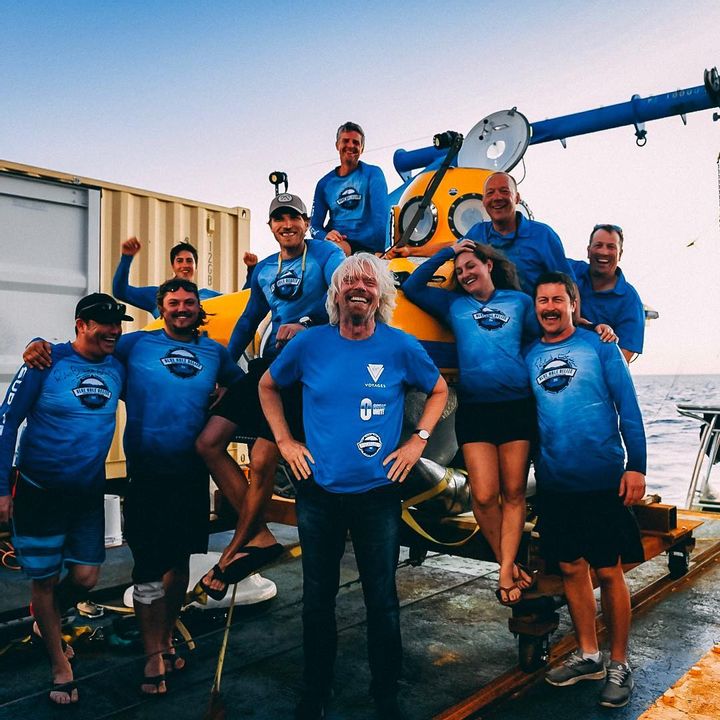
What started as a mission to map out an unexplored part of the planet had turned into a mission of mapping the frontiers human pollution had already conquered.
The hole didn't contain any underwater beasts other than the oceanic monster of humanity's own making: pollution.
Branson wasn't going to let this pass quietly. Together with Ocean Unite a conservationist conglomerate he decided to take action - not just to save the Blue Hole but the rest of the ocean as well.
17 Saving the World's Oceans
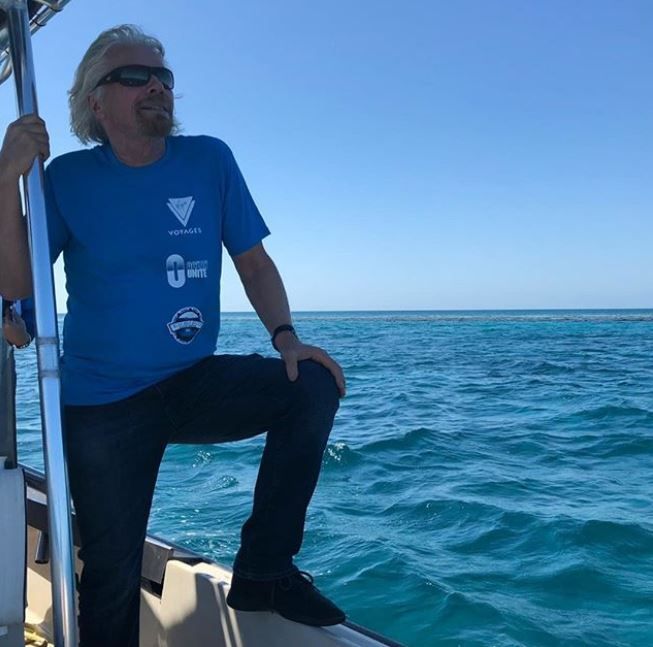
Ocean Unite's stated goal is by 2030 to set aside a minimum of 30 percent of the world's oceans as protected areas which would carry real legal ramifications should they be damaged.
As a member of Ocean Unite Branson attempts to combat ocean pollution wherever and however he can. Even before he had embarked on his deep-sea mission Branson had met up with the prime minister of Belize and his wife.
The billionaire explorer had hoped to convince the nation's leader to put aside %10 of his country's territorial waters as protected areas meant for conservation as well as to ban various commercial and industrial products proven to be highly damaging to oceanic ecosystems.
The Aquatic's findings would serve as more evidence for the importance of this move.
18 Leading By Example
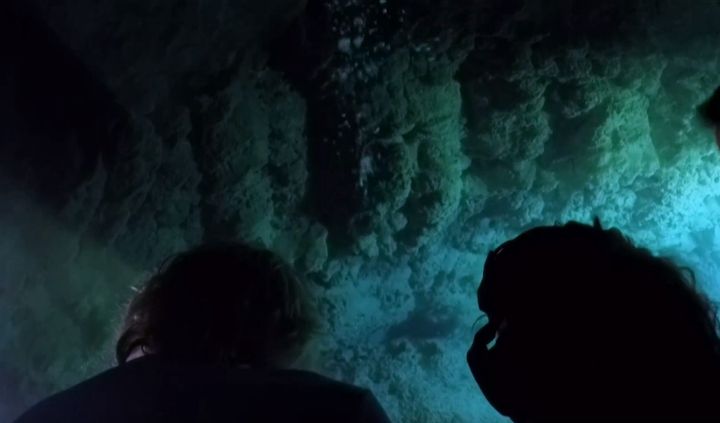
Sir Richard Branson couldn't shake what he had seen at the bottom of the seemingly pristine Blue Hole. He realized that change was needed and he intended to start it with the way he ran his companies.
Branson said that his grandchildren would be in their thirties by 2050 and that he couldn't bear imagining them living in a future without natural wonders like coral reefs and he pledged to do everything he could to help save the planet.
Upon his return home he declared that his airlines would stop using single use plastics on board their flights following Belize's pledge to stop using the harmful material during 2019.
But this isn't the only action Branson has taken.
19 Ocean Elders
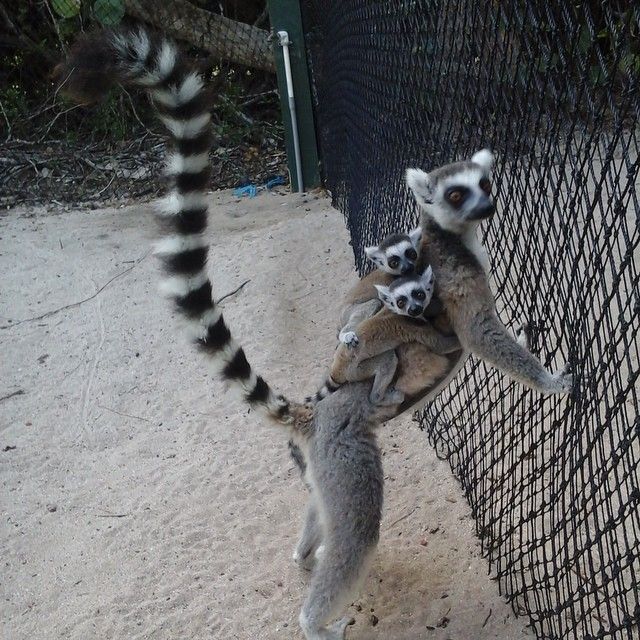
Sir Richard Branson is a volunteer contributing member and founder of several substantial charities and NGOs dedicated to the preservation of the environment.
He's bought and dedicated an entire Caribbean island to the boosting and conservation of Madagascar's ring-tailed lemur founded the Special Award for the Environment and perhaps most notably a key member in the OceanElders organization.
The group made up of influential individuals in business entertainment and art is devoted to raising awareness for environmental issues. Other members include people like Neil Young Jackson Browne… and Jean Michel Cousteau Fabien's father.
But what would become of the Blue Hole?
20 The Problem with Plastic
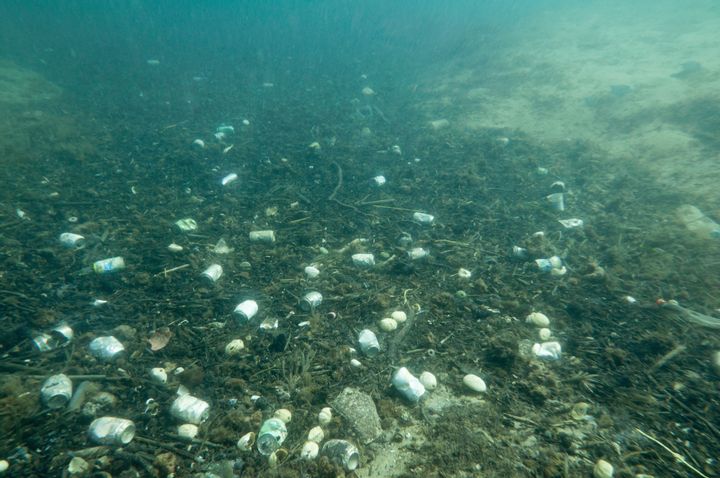
Our planet is facing many environmental catastrophes in recent years - and one of the biggest ones is that of plastic waste.
Many influential people have decided to pool their resources together to fight the threat of plastic pollution and join the likes of Branson in fighting the good fight.
Hopefully with the financial help and influence of big names like Branson James Cameron and others as well as grassroots organizations made up of volunteers the oceans will get cleaner over the next few decades.
But Belize's Blue Hole isn't the only Blue Hole out there. In Egypt a different Blue hole also faces the threat of pollution - as well as a different sort of danger to divers.
21 The Red Sea's Blue Hole
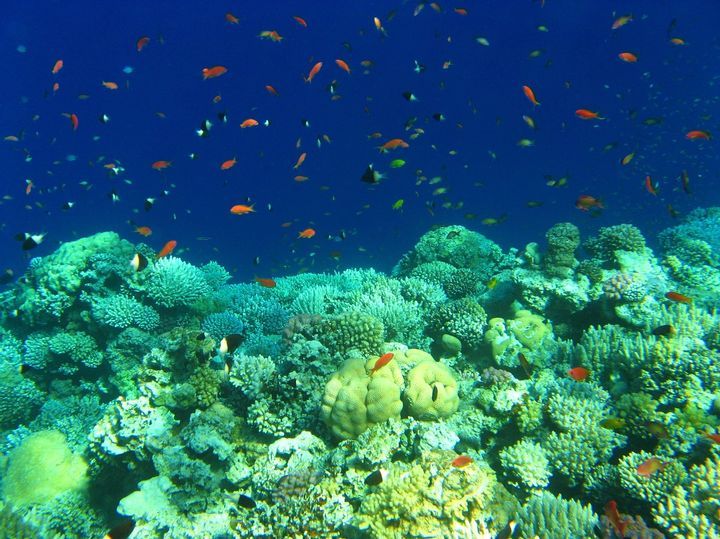
The Red Sea is the northernmost tropical sea on the planet stretching from Israel in the north all the way down to Yemen in the south.
A biodiversity hotspot its pristine waters and seemingly endless expanses of coral reefs especially surrounding the Sinai Peninsula make it one of the best diving destinations on earth.
In Egypt along the Sinai coast just north of Dahab the Red Sea boasts its own Blue Hole.
Smaller than Belize's Sinai's Blue Hole has a far grimmer reputation than its Mesoamerican counterpart's.
22 Just Off the Beach
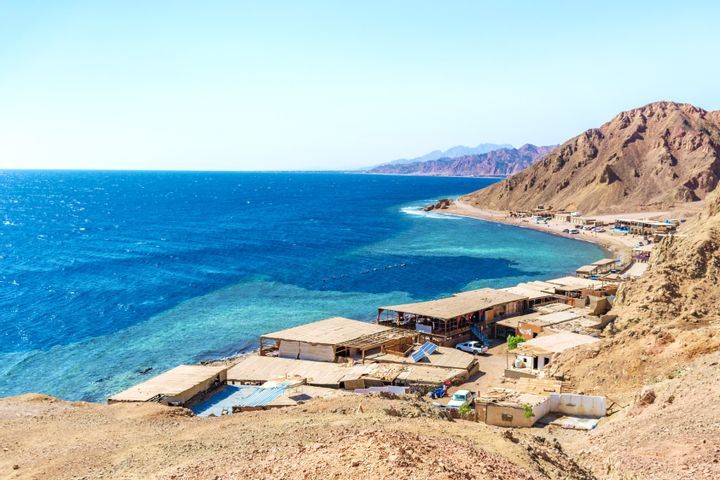
Unlike Belize's Blue Hole the one in Sinai doesn't require a boat to reach. It's actually right off the beach - but accessing it isn't as easy as simply jumping in the water and its proximity to land does not assure its safety.
23 The Dangers of the Arch
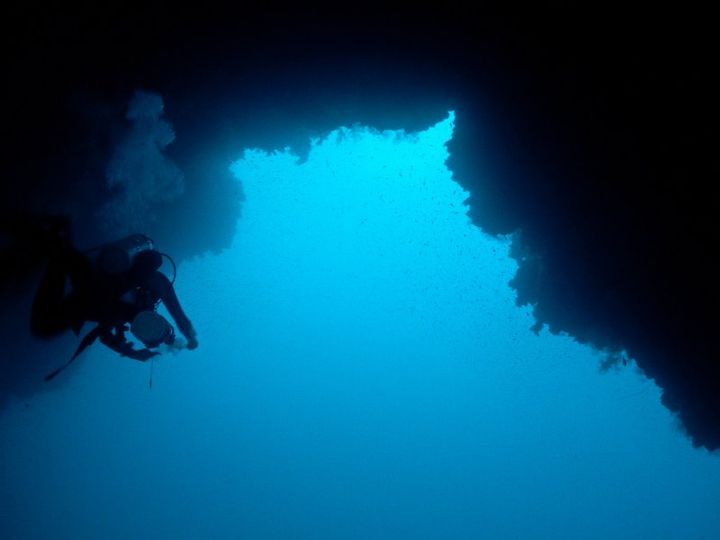
Sinai's Blue Hole is notoriously dangerous and only experienced divers are permitted to access it - and even then only when accompanied by a local guide.
The reason for the Hole's notorious reputation is in an underwater structure known as "The Arch."
The Arch is a tunnel which runs beneath the reef and connects the Blue Hole to the open sea - but due to its depth and confusing shape many divers can become disoriented when they attempt to traverse it often succumbing to nitrogen narcosis - a physical phenomenon that takes hold of divers at large depths - losing their way and sometimes their lives.
24 World's Most Dangerous Diving Site
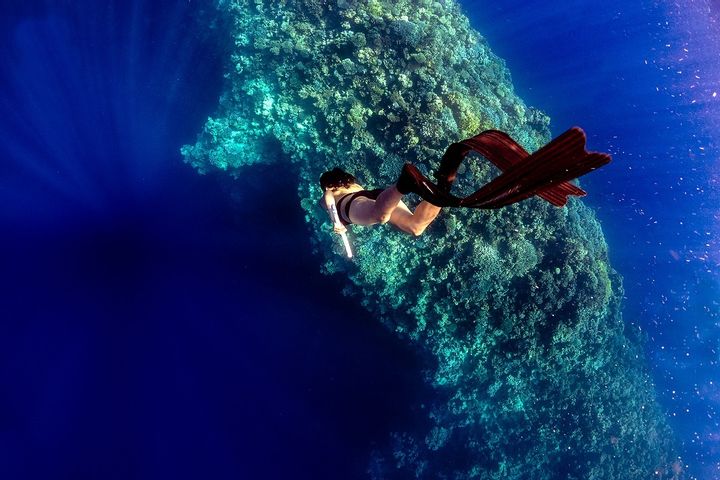
Due to the confusing shape of the arch as well as the hallucinations and disorientation caused by nitrogen narcosis only very experienced divers are allowed to explore the Blue Hole in Sinai.
The site is considered one of the most dangerous diving locations in the world and it is estimated that over 200 people have lost their lives while SCUBA diving in its hidden depths.
But no matter how dangerous the site may be to divers the dangers humanity poses to it in the form of pollution far outweigh it.
25 The Material
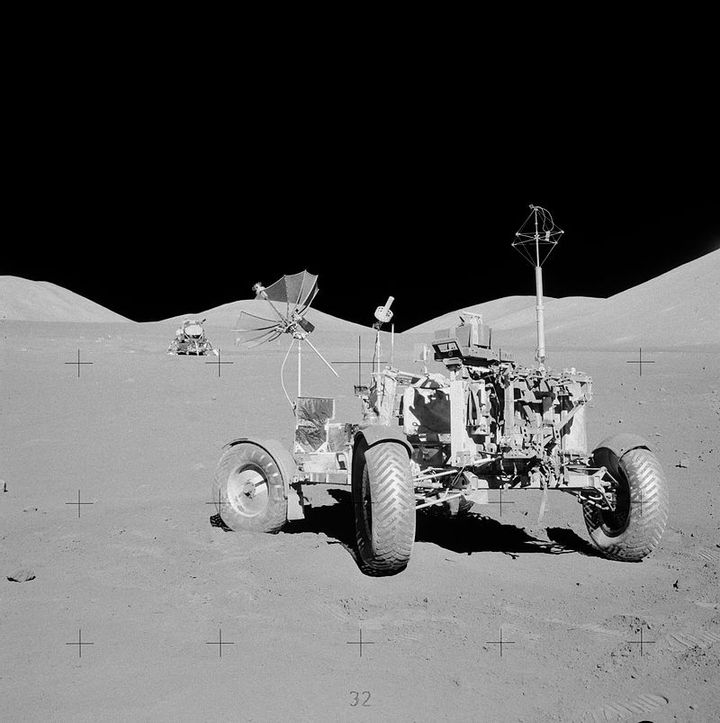
The authors of the article described the material as a “dark greenish and glistening impact melt breccia” that measured 20 inches by 6 inches. The features are signs of the possible presence of glasses which usually occur after volcanic eruptions or impact melts.
According to the paper the breccia—a broken fragment of minerals cemented together—was “formed by impact-generated welding cementing and agglutinating of lunar regolith and breccia.”
But that’s not all they concluded—the breccia resembled the lunar impact melt returned by past Apollo missions.
26 Apollo Missions
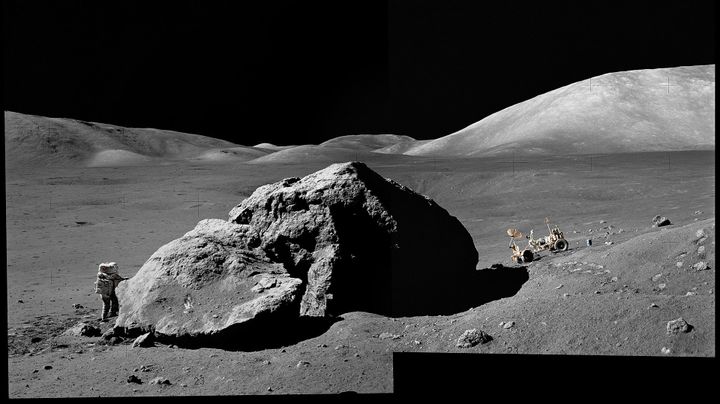
The experts were on to something when they started looking at discoveries from past lunar missions especially NASA’s Apollo missions. But instead of being interested in the orange soil the authors of the article were interested in another discovery that astronaut and geologist Harrison “Jack” Schmitt made on the Apollo missions.
The material resembled the Apollo samples designated Sample 70019 and 15466 which were impact melt breccia samples returned by past Apollo missions.
27 Bad Illumination
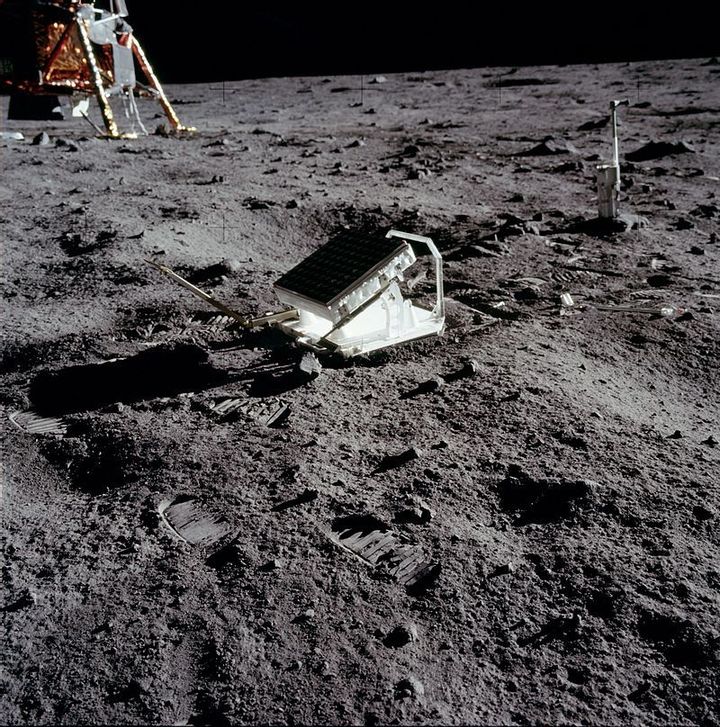
While the results from the analysis coincide with what scientists around the world thought the results aren’t definitive.
The analysis was limited because Yutu-2’s Visible and Near-Infrared Spectrometer (VNIS) measurements were taken under bad illumination conditions and other factors making it hard to make any definite conclusions about the gel-like substance found in the crater.
While it’s possible that the mysterious substance is glass which occurred after volcanic eruptions or impact melts it’s difficult to be certain about it because of the poor lighting.
28 “Challenging Problem”
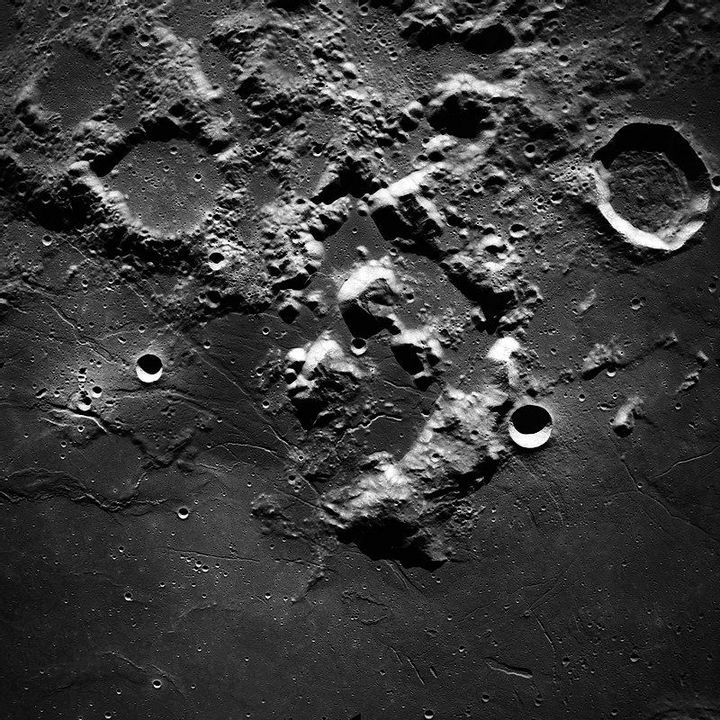
Even though the results from the study are inconclusive we can still learn something from it because the authors were very thorough with their analysis. Exploring an unexplored area of the Moon is challenging and this discovery by China’s Chang’e-4 was rare.
“The authors do an excellent job of rigorously documenting their approach and assumptions so their results can be understood in the context of this extremely challenging problem” NASA postdoctoral fellow at Goddard Space Flight Center in Maryland Dan Moriarty told Space.com.
29 Lunar Discoveries
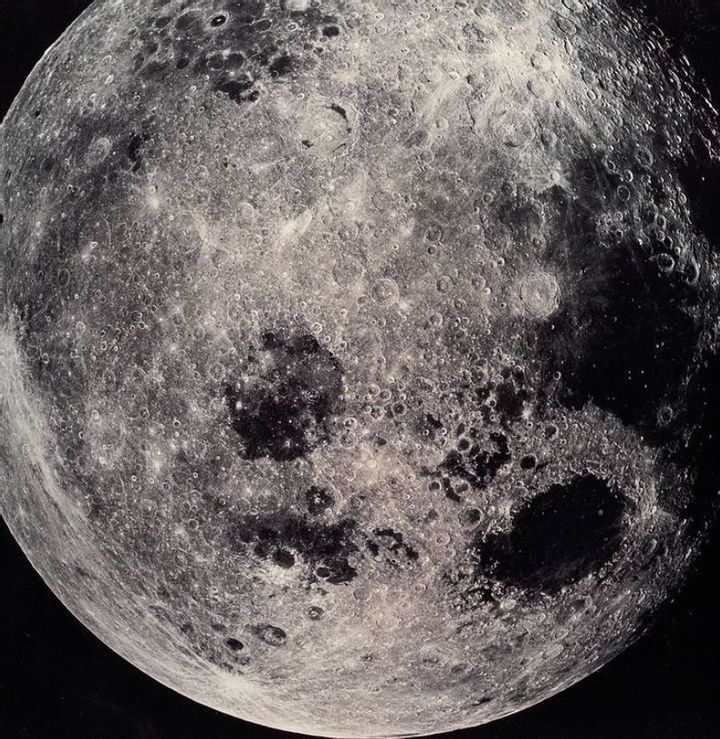
While there haven’t been manned missions to the Moon in almost 50 years there are still many unmanned lunar expeditions today. Space remains a secret to us and there is tons to continue exploring
China’s Chang’e-4 made history as the first landing on the far side of the Moon where no humans have walked before and its discovery of a gel-like substance was groundbreaking revealing mysteries about the Moon. And we can’t wait to see what other lunar discoveries are made in the future!

